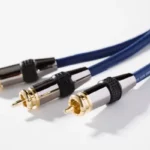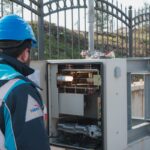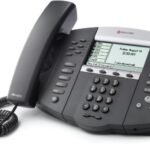India is predominantly a warm nation, and power outages are common from time to time. People from all around the globe are combating such scenarios of power outages with the tool of uninterrupted power supply – inverter batteries. They have been used for decades now. The appliance stores energy and provides backup power when the main electricity supply breaks.
Many different types have evolved over time based on their needs and uses. A person who decides to purchase a power backup must have basic knowledge of how to choose the best product. This guide on inverter batteries will simplify the process of selecting the best one for your needs. Read on to know the types, features, and performance of each.
Types of Inverter Batteries

Let’s decode the first confusion of understanding the different types of inverter batteries. Remember, each type comes with its own advantages and limitations.
Flooded Lead-Acid Batteries
- Description: These are traditional batteries containing a liquid electrolyte.
- Maintenance: These batteries require regular maintenance. You need to check and top up the water levels.
- Lifespan: Typically lasts between 3 and 5 years.
- Cost: Generally, the most affordable option.
- Performance: They are suitable for high discharge cycles but can emit gases during charging, necessitating proper ventilation.
Absorbent Glass Mat (AGM) Batteries
- Description: These options are sealed with a fibreglass mat to absorb the electrolyte.
- Maintenance: No maintenance needed
- Lifespan: Approximately 5 to 7 years
- Cost: Moderately priced
- Performance: They offer better performance than flooded lead-acid batteries and charge faster.
Gel Batteries
- Description: These are the sealed ones with a gelled electrolyte.
- Maintenance: No maintenance needed
- Lifespan: Around 5 to 7 years
- Cost:
- Performance: They are safe and less prone to spillage, with good deep cycle capabilities.
Lithium Iron Phosphate Batteries
- Description: These are lightweight with high energy density.
- Maintenance: Maintenance-free
- Lifespan: Can last over 10 years
- Cost: Higher initial investment
- Performance: They have excellent longevity and efficiency, with fast charging capabilities.
Tubular Batteries
- Description: They have tubular-shaped positive plates that enhance their performance.
- Maintenance: They require low maintenance.
- Lifespan: 4 to 5 years.
- Cost: Moderately priced.
- Performance: These batteries excel in deep discharge cycles. This renders them suitable for demanding applications.
Inverter Battery Maintenance Tips.
Key Features to Consider
It is essential to have a basic understanding of the key features of inverter batteries before making a purchase. This way, you will choose the best option that is specific to your requirements:
- Maintenance Needs: You must determine how much time and effort you can allocate to battery maintenance. Maintenance-free inverter battery options require less attention.
- Lifespan: The duration for which the battery functions is also an important consideration. The best example of the longest durability is the lithium battery, and the least durable is the flooded lead-acid battery.
- Performance: You must calculate the battery’s efficiency and its charging speed. Lithium-iron-phosphate batteries are highly efficient and have a relatively fast charging speed. Lead-acid batteries are less efficient but more cost-effective. Therefore, you must decide accordingly.
- Weight and Portability: If portability is what you are looking for, go for lightweight options like lithium batteries. These are easier to move compared to their heavier lead-acid counterparts.
Performance Metrics
Understanding performance metrics helps in comparing different battery types:
- Energy Density: Lithium batteries have a higher energy density. They can store greater energy in a smaller volume.
- Depth of Discharge: You can let the Lithium batteries be discharged up to 80-90% without any degradation. Lead-acid batteries degrade when discharged below 50-60%.
- Efficiency: Lithium-ion and lead-acid batteries offer 90-95% and 80-85% efficiency, respectively.
Calculating Your Power Requirements
To choose the right inverter battery, you need to assess your power needs:
- List Your Appliances: Make a list of all the devices you want to power during an outage and their wattage, too.
- Calculate Total Wattage: Add the wattage of all devices together. Let’s see this example:
- LED bulbs (100W).
- One ceiling fan (75W).
- One refrigerator (300W).
- One laptop (65W).
- One welding machine (860W).
The total is approximately 1,400W.
- Determine Backup Time: Get a clear idea of how many hours of backup you will require. You have to multiply the number of hours by the total wattage. Like if we see the example:
1,400W × 4 = 5,600Wh
- Convert to Ampere-Hours (Ah): Divide the total watt-hours by the battery voltage (usually 12V).
5,600 ÷ 12 = 467Ah approximately
- Add a Safety Margin: Include a 20-25% buffer to account for power surges and inefficiencies.
Details That Will Help in Choosing the Right Battery
The following details will help you decide on the inverter according to budget and application:
Budget Considerations
| Battery Type | Initial Cost | Lifespan | Efficiency | Maintenance | Best For |
| Flooded Lead-Acid | Low | 3–5 years | 80–85% | High | Budget-conscious users with basic needs |
| Lithium Iron Phosphate | High | 10–20 years | 95–98% | None | Long-term savings and high-performance needs |
Application Suitability
| Application | Recommended Battery Type | Reason |
| Marine & RV | AGM or Gel | Maintenance-free, vibration-resistant, and safe for confined spaces |
| Off-Grid Solar Systems | Gel | Deep-cycle capability and excellent performance in varying temperatures |
| Heavy-Duty Industrial Use | Tubular | Robust design suitable for frequent deep discharges and heavy load handling |
Maintenance Tips for Prolonging Battery Life
After you purchase, you must also know how to maintain the inverter battery for optimal performance and a longer lifespan. Some essential tips are as follows:
- Regular Inspection and Cleaning
- Check for corrosion in the battery terminals
- Clean the terminals with a mix of baking soda and water.
- Keep the battery surface clean by gently wiping away dirt with a soft cloth.
- Maintain Proper Water Levels
- Regularly inspect the water levels and top up with distilled water as needed.
- Do not use tap water.
- Do not overfill the battery to avoid acid spillage and damage
- Install in a well-ventilated area to prevent overheating.
- Avoid deep discharging (do not go below 50% of its capacity).
- Use the battery regularly (at least once a month to maintain its good working condition.)
- Go in for periodic professional maintenance.
Best Inverter Battery For Home.
Conclusion
So, now you have understood the different types of inverter batteries and their features. Moreover, the performance metrics and the method for determining your power needs are included. When choosing a type of inverter battery that suits your requirements, you should thoughtfully evaluate various important aspects, such as price, longevity, portability, efficiency, and additional factors.
Join 25,000+ smart readers—don’t miss out!







